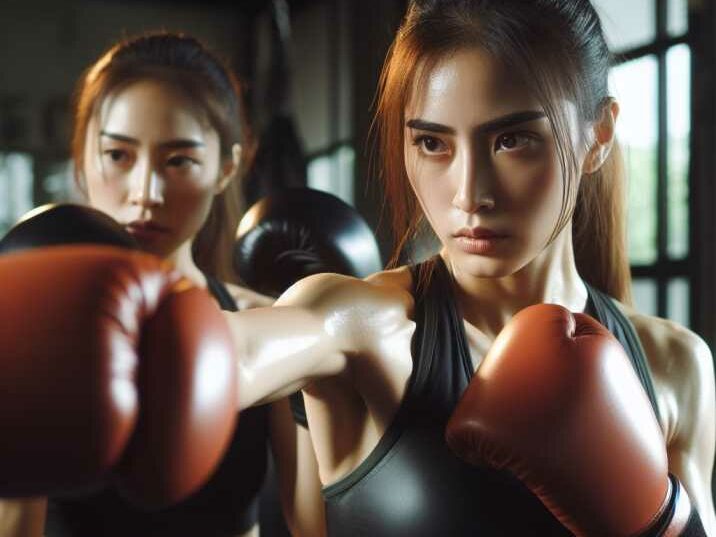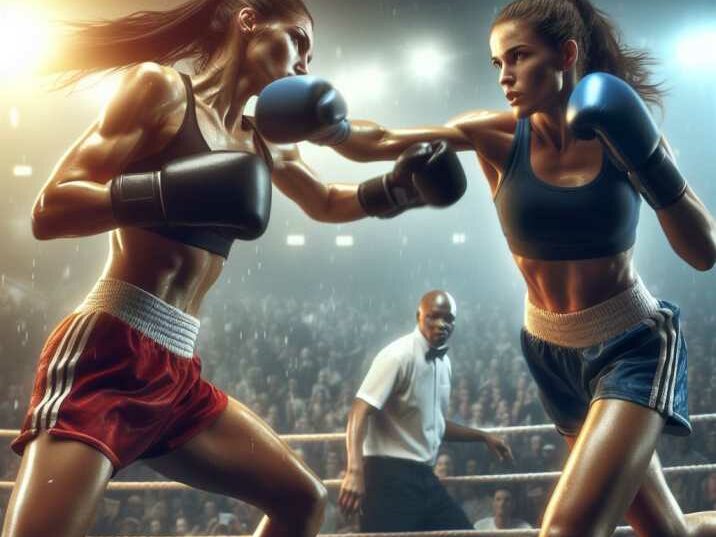Introduction:
Table of Contents
Women’s boxing has come a long way since its inception, undergoing significant transformations and overcoming numerous hurdles along the path to recognition and acceptance. In this comprehensive analysis, we will explore the evolution of women’s boxing, tracing its roots, highlighting pivotal moments in its history, and examining its current status as a dynamic and thriving sport.

Evolution of Women’s Boxing:
The evolution of women’s boxing is a story of resilience and determination, spanning centuries of struggle and triumph. From its humble beginnings to its current status as a celebrated sport, female fighters have shattered stereotypes and paved the way for future generations.
1. The Early Days of Women’s Boxing: Breaking Barriers
In the early 18th century, women first began stepping into the boxing ring, albeit in clandestine matches and underground circuits. These brave pioneers defied societal norms and challenged gender stereotypes, paving the way for future generations of female fighters.
- Challenges and Opposition Despite their passion and talent, female boxers faced fierce opposition from both the public and the boxing establishment. Many viewed women’s participation in the sport as scandalous and inappropriate, leading to widespread discrimination and marginalization.
- Rise of Trailblazers Despite the obstacles, several trailblazing women emerged during this period, determined to prove their worth inside the ring. One such pioneer was Elizabeth Wilkinson, who gained fame in the early 18th century for her skill and tenacity in boxing matches.
2. The Fight for Recognition: Pioneering Female Boxers
Throughout the 19th and early 20th centuries, women’s boxing continued to exist on the fringes of society, largely ignored by mainstream sports organizations. Despite this lack of recognition, a handful of exceptional female boxers rose to prominence, showcasing their talent and resilience in exhibitions and smaller-scale competitions.
- Rise of Women’s Boxing Clubs Despite the prevailing prejudice, women’s boxing clubs began to emerge in various parts of the world, providing a supportive environment for female fighters to hone their skills and compete against one another.
- Notable Figures During this period, several notable female boxers captured the public’s imagination with their skill and determination. Among them was Barbara Buttrick, known as the “Mighty Atom of the Ring,” who gained widespread acclaim for her exceptional boxing prowess.
3. Breaking Boundaries: Women’s Boxing Enters the Mainstream
The latter half of the 20th century witnessed a seismic shift in the perception of women’s boxing, as the sport gradually began to gain mainstream recognition and acceptance. A series of landmark events and influential figures played a crucial role in propelling women’s boxing into the spotlight, challenging stereotypes and reshaping public perception.
- Olympic Inclusion One of the most significant milestones in the history of women’s boxing was its inclusion in the Olympic Games. In 2012, female boxers competed for the first time in the Olympic ring, marking a historic moment for the sport and providing a platform for female athletes to showcase their talent on the world stage.
- Rise of Superstars The rise of charismatic and talented female boxers, such as Claressa Shields and Katie Taylor, helped elevate the profile of women’s boxing and attract new fans to the sport. These trailblazing athletes shattered glass ceilings and inspired a new generation of female fighters to pursue their dreams in the ring.
4. The Present and Future of Women’s Boxing: A Bright Outlook
Today, women’s boxing enjoys unprecedented popularity and recognition, with female fighters competing at the highest levels of the sport and commanding respect and admiration from fans worldwide. Despite the progress that has been made, challenges remain, and the fight for gender equality in boxing continues.
- Professional Success Female boxers are no longer relegated to the sidelines but are instead celebrated as elite athletes capable of competing at the highest levels of the sport. Major promotions, such as Matchroom Boxing and Top Rank, now feature women’s bouts alongside men’s fights, further cementing the legitimacy of women’s boxing.
- Empowerment and Representation Women’s boxing serves as a powerful platform for empowerment and self-expression, allowing female athletes to challenge stereotypes, defy expectations, and inspire others with their courage and determination. By breaking down barriers and demanding equal treatment, female boxers are driving positive change within the sport and beyond.

Table of information related to the evolution of women’s boxing:
| Year | Milestone |
|---|---|
| 1722 | Elizabeth Wilkinson becomes one of the first recorded female boxers |
| 1876 | First women’s boxing club established in London |
| 1904 | Women’s boxing featured in the Olympic Games exhibition |
| 1954 | Barbara Buttrick becomes the first licensed female boxer |
| 2012 | Women’s boxing included in the Olympic Games for the first time |
| Present | Women’s boxing enjoys mainstream recognition and success |
This table provides a concise overview of key milestones in the evolution of women’s boxing, highlighting significant events throughout history.
Conclusion:
The evolution of women’s boxing is a testament to the resilience, determination, and talent of female athletes who have refused to be confined by gender norms or societal expectations. From the early pioneers who dared to step into the ring to the trailblazers who continue to push boundaries today, women’s boxing has undergone a remarkable transformation, evolving from a marginalized pursuit to a celebrated and respected sport.
As we look to the future, it is clear that the journey of women’s boxing is far from over. With each punch thrown and each barrier broken, female fighters are writing a new chapter in the history of the sport, inspiring generations to come and proving that in the ring, gender knows no bounds.
FAQs:
- Q: When did women’s boxing first gain mainstream recognition? A: Women’s boxing began to gain mainstream recognition in the latter half of the 20th century, with significant milestones such as its inclusion in the Olympic Games.
- Q: Who are some notable female boxers in the history of the sport? A: Notable female boxers include Barbara Buttrick, Claressa Shields, and Katie Taylor, among others, who have made significant contributions to the sport.
- Q: What challenges have female boxers faced throughout history? A: Female boxers have faced numerous challenges, including discrimination, lack of opportunities, and societal stigma against women participating in combat sports.
- Q: How has the inclusion of women’s boxing in major promotions impacted the sport? A: The inclusion of women’s boxing in major promotions has elevated the profile of the sport and provided female fighters with greater opportunities to showcase their talent on a global stage.
- Q: What role does women’s boxing play in promoting gender equality in sports? A: Women’s boxing serves as a powerful platform for promoting gender equality in sports by challenging stereotypes, empowering female athletes, and advocating for equal treatment and opportunities.


